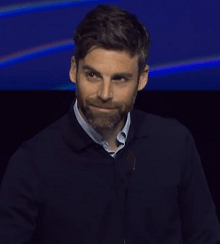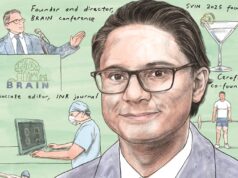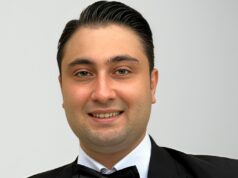
The world of interventional neuroradiology will likely need to follow the cardiology field and conduct large-scale prospective studies in order to move away from ‘eminence-based medicine’, and gain a better understanding of antithrombotic medication outcomes. “I think we can do better,” Jildaz Caroff (Bicêtre Hospital, Le Kremlin-Bicêtre, France) told attendees at LINNC Paris 2022 (30 May–1 June, Paris, France), emphasising the need to move from eminence- to evidence-based practice.
At the outset of his talk, Caroff noted that decisions regarding antithrombotic medications are “easier” to make for those in the cardiology space, owing to the presence of clear guidelines in both Europe and the USA. However, the relatively small number of studies—and lack of randomised controlled trials (RCTs)—on these medicines in cerebral aneurysms and acute ischaemic stroke means current practice varies, and is often based on teaching or the views of key opinion leaders, Caroff claimed.
To this end, he highlighted the results of a comprehensive national survey conducted across France in 2021 and published in the Journal of NeuroInterventional Surgery earlier this year. This survey was carried out within the JENI (Jeunes en Neuroradiologie Interventionnelle) group—a network of young French physicians working in interventional neuroradiology that is “very well-coordinated and reactive”, according to Caroff.
Summarising the survey’s findings, Caroff reported that there was a defined protocol for antithrombotic medications in 58% of centres, meaning there is no available protocol in close to half of the centres surveyed and antithrombotic strategies are based primarily on operator discretion. “I think this reflects the fact that, due to uncertainties, the best strategy could not be determined or formalised, but it could also mean that different physicians within a centre may not act the same way,” he asserted.
Caroff moved on to state that discrepancies in aspirin dosages and choices of P2Y12 inhibitors (ticagrelor, clopidogrel and prasugrel) for unruptured aneurysms were observed, and the survey also found “major variability” in heparin bolus dosages. In addition, the speaker noted his surprise that close to 25% of all centres were using postoperative heparinisation. He then highlighted uncertainties and further variation in ruptured aneurysm treatment strategies—specifically in heparin bolus injection approaches and emergent stenting, for which there was “no consensus”.
“We still have many uncertainties in acute ischaemic stroke as well, but we are beginning to get more answers, and I think this should inspire us regarding aneurysm treatments,” Caroff continued. Here, he highlighted the fact that, for mothership patients, 15% of comprehensive stroke centres in the survey reported a switch from alteplase to tenecteplase as a first-line fibrinolytic and that, in spite of the increased risk of symptomatic intracranial haemorrhage observed in the MR CLEAN-MED trial, 28% of centres occasionally administered an intravenous bolus of heparin at the beginning of a mechanical thrombectomy procedure.
Caroff then revealed the results of an online survey conducted among LINNC attendees during his talk, indicating that an overwhelming majority of those in attendance (98%) believe interventional neuroradiology guidelines on the use of antiplatelet therapy and heparin are required. He proceeded to echo this message himself, noting that “very efficient” protocols are needed. The speaker also highlighted the importance of further evaluation in this space, adding: “I think there is room for prospective, controlled registries to help us improve our understanding. There is clearly a need for randomisation too—but this is going to be very tricky.”
“We have to define topics, and I think we also have to be ready to face a high number of patients,” he posited, noting that more than 18,000 patients were included in the RCT that was used to prove ticagrelor’s superiority over clopidogrel in the cardiology space. Finally, Caroff asserted that there is a need for global neurointerventional societies to collaborate here, and restated the importance of more definitive protocols and recommendations. “This is going to be difficult without [further] evidence,” he conceded, “and, clearly, people with years of practice will not change what they are doing based on recommendations.” He also noted, however, that renewed protocols may be more beneficial in helping to guide younger, less experienced physicians.
“Finally, there is a need for harmonisation because—if we want to gain credibility as a field—we clearly need to change our practice,” Caroff concluded. In a subsequent discussion, Guilherme Dabus (Miami Neuroscience Institute, South Miami, USA) supported many of Caroff’s points, noting that “in a lot of the things we do, we really are still an eminence-based field”, and stating that further data collection and prospective studies on these medications are warranted.
Responding to Caroff’s point on the need for societies to get involved in wide-scale antithrombotic medication research, J Mocco (Mount Sinai Health System, New York, USA) said that multi-thousand-patient analyses are feasible through existing, ongoing registries—such as those supported by the Society of NeuroInterventional Surgery (SNIS) and the Society of Vascular and Interventional Neurology (SVIN)—but this will require “every one of us taking time out of our day to put the data in, which is not easy”.









